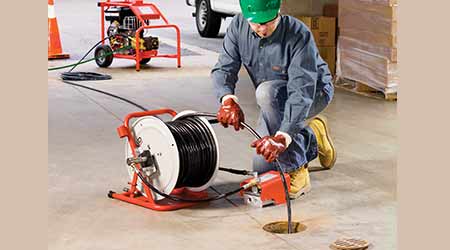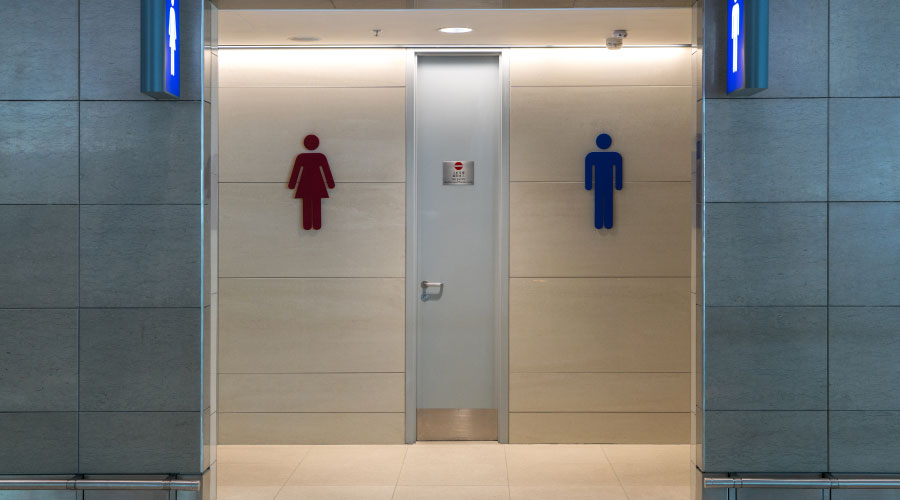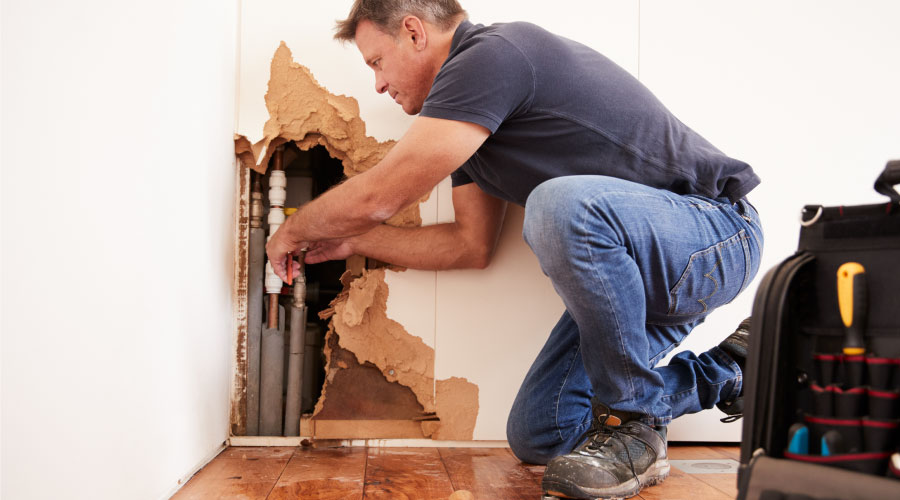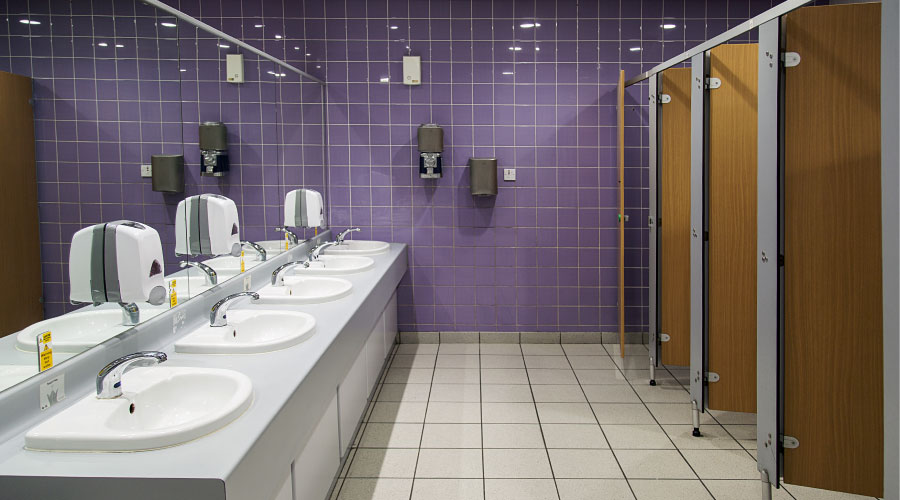 Technicians must wear eye and skin personal protective equipment when handling drain cleaning equipment and when working with chemical cleaners.RIDGID
Technicians must wear eye and skin personal protective equipment when handling drain cleaning equipment and when working with chemical cleaners.RIDGIDEquipment Considerations When Establishing Drain Cleaning Program
Part 3 of a three-part article on drain cleaning
While occupant education and the strategic use of chemicals can help managers prevent clogged drains and piping systems, there are times when only drain cleaning equipment will do. Knowing a facility’s drain system is essential for producing the best results.
The diameter of the drain and its location and purpose — floor, lab or industrial process, kitchen sink, bathtub, shower, toilet, rest room sink, etc. — will determine the strategy for removing a clog. Sink drains have 1½-inch-diameter pipes. Laterals next to the drain have 1½-inch diameters. Laterals and verticals farther from the drain have 2- to 4-inch diameters, depending on the facility’s age. Mains have 4-inch diameters, with collectors nearest to the treatment plant being the largest.
To deploy the most appropriate equipment to remove a clog, technicians need to gather some key information.
Clogs are more common in lower floors of multi-floor buildings, such as commercial office buildings, schools and hospitals. Clogs from accumulated solids are most likely to occur in kitchen drains at the ends of laterals and at the bottom of verticals where they meet laterals and where most cleanout plugs are located.
One reliable clue to a clog’s location is whether water backs up quickly, which means the clog is close to the drain surface, or slowly, which means the clog is deeper in the drain system and has more pipe to fill before backing up. Technicians also need some idea of the type of material involved, whether it is grease, toilet paper, sanitary products, diapers, hair, soap, or hard objects, such as toys or bottle caps.
Technicians facing a clog that is stubborn or farther into the drain pipe need a power rooter. These units come with either continuous or sectional cables. Continuous cables can clear drains up to 100 feet from the opening. If the clog is deeper or involves hard objects or tree roots, a sectional drain cleaner might work better.
Sectional cleaners with expanding head cutter attachments can go deeper into pipes, and they can expand up to 12 inches as the pipe diameter expands. The centrifugal force of a cutter’s rotation keeps it against the pipe wall, where they can clear the entire cross section of the pipe and effectively remove objects that include tree roots.
Technicians can use specialized drain cleaning tools, such as long shank chisels and saws, to reach into drains to cut roots that invade piping. This problem frequently occurs where tree roots approach building foundations and enter a separate drain pipe joint or a crack in a broken pipe.
Technicians are in luck if they are able to see a clog because it is close enough to a cleanout. The next step involves sawing the root off cleanly so no protrusion beyond the inside pipe wall remains. Retrieving the sawed-off root and identifying the species of tree it came from can help technicians more quickly locate the culprit tree.
When a clog is too far into the piping or past a bend to see, technicians can use a fiber optic camera. Camera technology has improved greatly. Units now include larger database capacity in terabytes, report generators, and data-transmission ability for distributing reports real time. With added GPS and footage travelled shown on the monitor, the equipment can locate the problem. If the clog is underground, the technician knows exactly where to begin digging if the solution is to cut and cap tree roots to prevent further intrusion.
Thomas A. Westerkamp is a maintenance and engineering management consultant and president of the work management division of Westerkamp Group LLC, www.westerkampgroup.com.
Related Topics:














